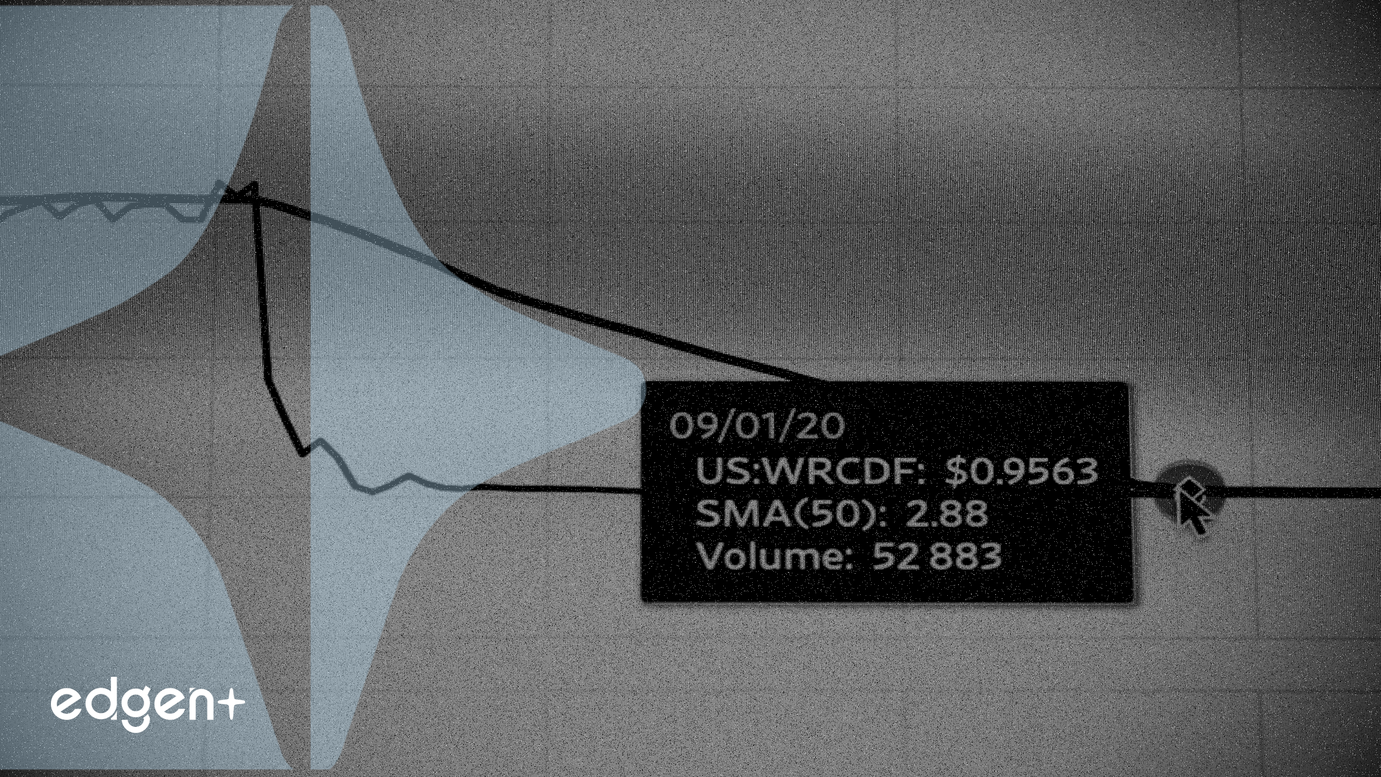Related News

Marathon Digital's Bitcoin Transfer Spurs Market Volatility Amid Liquidity Debates
## Marathon Digital Transfers Bitcoin Holdings to Exchanges Amid Broader Crypto Market Fluctuations U.S. equities saw varied performance on November 5, 2025, but the cryptocurrency market experienced notable volatility following a significant transfer of **Bitcoin (BTC)** by **Marathon Digital Holdings (MARA)**. The **Bitcoin** price slipped approximately 5%, with **Ethereum (ETH)** dropping 8%, as investors reacted to both company-specific actions and broader macroeconomic liquidity shifts. ## The Event in Detail: Marathon Digital's Strategic Move and Market Impact On November 5, 2025, **Marathon Digital (MARA)** executed a transfer of 2,348 **Bitcoin**, amounting to approximately $236 million, to four prominent institutional platforms: **Coinbase Prime**, **FalconX**, **Galaxy Digital**, and **Two Prime**. This transaction was flagged by **Arkham Intelligence**. Concurrently, **BlackRock** also moved over $1 billion in **BTC** and **ETH** to **Coinbase** within the preceding five-day period. Following these substantial transfers, the price of **Bitcoin** declined by roughly 5%, and **Ethereum** experienced an 8% reduction. Despite the broader market dip, **Solana (SOL)** Exchange Traded Funds (ETFs) reportedly absorbed fresh capital during this period. While **MARA** currently retains substantial holdings of approximately $1.68 billion in **Bitcoin**, the movement of assets to exchanges often precedes liquidation or rebalancing of large positions. This action by **MARA** reflects a shift in its treasury strategy. The company has ceased its 16-month practice of "hodling" all newly mined **Bitcoin**, selling approximately half of its September production. This adjustment comes amidst increasing operational costs and challenging mining conditions, characterized by heightened network difficulties and a reduction in transaction fee income, which have collectively eroded profitability for major mining operators. ## Analysis of Market Reaction: Liquidity Dynamics and Miner Behavior The immediate market reaction to **MARA**'s transfer was one of caution, with some segments of the crypto community anticipating a "tsunami of selling." This sentiment, combined with the broader financial landscape, contributed to the observed price contractions in **Bitcoin** and **Ethereum**. A significant macroeconomic factor influencing recent market liquidity has been the substantial increase in the U.S. Treasury General Account (TGA), which reached approximately $965 billion. This accumulation of cash within the Treasury has effectively withdrawn liquidity from the broader markets. Analysts from **LondonCryptoClub** noted that "When the Treasury builds cash in the TGA, it removes liquidity that would otherwise circulate through the economy." This tightening of liquidity is also evident in falling bank reserves and rising funding costs, with the Secured Overnight Financing Rate (SOFR) widening and the Federal Reserve's Standing Repo Facility (SRF) seeing its highest utilization ($10 billion in loans) since 2021. ## Broader Context and Implications: The Role of Monetary Policy and Historical Precedent Despite the immediate market pressures, prominent figures like Arthur Hayes anticipate a strong resurgence in **Bitcoin** and broader cryptocurrency markets. Hayes attributes this potential rally to expected U.S. monetary expansion, foreseeing that increasing Treasury debt and the Federal Reserve's expanding balance sheet, particularly through its SRF, will inject substantial liquidity. Hayes stated, "The growth of the Fed's balance sheet is dollar liquidity positive, which ultimately boosts the price of Bitcoin and other cryptocurrencies." He maintains a long-term forecast that **Bitcoin** could reach $1 million, underpinned by ongoing fiscal expansion, monetary debasement, and growing global demand for hard digital assets. Historical data supports the notion that TGA movements can significantly impact **Bitcoin** prices. Analyst Raoul Pal suggests that the current tight liquidity, exacerbated by the TGA, may ease in November as government spending resumes and the Federal Reserve potentially concludes its balance sheet reduction efforts. Past instances have shown a clear correlation: a $50 billion drop in the TGA in 2018 coincided with a 19% rise in **Bitcoin**, and an $80 billion drawdown in 2022 saw a 22% increase in price. Commentator Satoshi Musk shares a similar outlook, projecting that a much larger release from the TGA could propel **Bitcoin** up by as much as 38%, potentially reaching $152,000. ## Expert Commentary > "While some traders warned of a potential 'tsunami of selling,' others viewed the transfer as a strategic risk mitigation move." — **Crypto Community Observers** > "The growth of the Fed's balance sheet is dollar liquidity positive, which ultimately boosts the price of Bitcoin and other cryptocurrencies." — **Arthur Hayes** > "This tight liquidity may ease in November when government spending resumes and the Federal Reserve ends its balance sheet reduction." — **Raoul Pal** > "When the Treasury builds cash in the TGA, it removes liquidity that would otherwise circulate through the economy." — **Analysts at LondonCryptoClub** ## Looking Ahead: Monitoring Liquidity and Policy Shifts The cryptocurrency market remains at a critical juncture, influenced by a confluence of on-chain miner activities and macro-financial forces. Key factors to monitor in the coming weeks include the Federal Reserve's monetary policy decisions, particularly concerning its balance sheet and any adjustments to interest rate guidance. The trajectory of the U.S. Treasury General Account and the resumption of government spending will be crucial indicators of future market liquidity. Furthermore, the evolving strategies of major **Bitcoin** miners, like **Marathon Digital**, in response to operational economics and market volatility, will continue to shape supply dynamics. These elements collectively will determine the near-term and long-term outlook for **Bitcoin** and the broader digital asset ecosystem.

Texas Instruments Shares Decline Following Subdued December Quarter Outlook
## Texas Instruments Shares Decline Following Subdued December Quarter Outlook **Texas Instruments (TXN)** shares experienced a significant decline of more than **8%** in after-hours trading following the release of its third-quarter results and a cautious forecast for the upcoming December quarter. The semiconductor company's guidance fell below Wall Street expectations, raising concerns about future revenue and profitability. ### Q3 Performance and Q4 Guidance Misses Estimates For the third quarter, **Texas Instruments** reported revenue of **$4.74 billion** and earnings per share of **$1.48**, representing a **14%** year-over-year increase in revenue. The company's analog business segment demonstrated strength, generating **$3.73 billion** in revenue, an increase of **16%** year-over-year, and surpassing expectations. However, the embedded processing segment underperformed, recording **$709 million** in revenue. The primary driver of the post-earnings sell-off was the company's guidance for the fourth quarter. **Texas Instruments** projected earnings to be between **$1.13** and **$1.39** per share and revenue in the range of **$4.22 billion** to **$4.58 billion**. These projections largely missed Wall Street's consensus estimates, which had anticipated revenue around **$4.5 billion**. Furthermore, analysts, such as Jefferies' Curtis, highlighted that the implied gross profit margin from the guidance range suggested a **55%** margin for the fourth quarter, notably below the **57.6%** consensus expected by Wall Street. The company attributed this conservative outlook to "a slower-than-typical recovery" influenced by ongoing macroeconomic and geopolitical concerns. ### Market Reaction and Valuation Context The immediate market reaction underscores investor sensitivity to future guidance, particularly regarding profitability. The discrepancy between **Texas Instruments'** forecast and analyst expectations triggered a swift repricing of the stock. Currently, **Texas Instruments** trades at a Price-to-Earnings (P/E) ratio of **33.12**, which is above its historical median of **22.63**. Its Price-to-Sales (P/S) ratio stands at **9.94** compared to a median of **8.02**. These elevated valuation metrics suggest that investors were particularly sensitive to any signs of slowing growth or margin compression, as the stock was already priced for robust performance. ### Broader Semiconductor Sector and Earnings Trends **Texas Instruments'** subdued outlook arrives at a time when the broader semiconductor sector is experiencing varied fortunes. While certain segments, particularly those driven by artificial intelligence, have seen explosive growth—exemplified by companies like **NVIDIA Corp. (NVDA)** which briefly surpassed a **$5 trillion** market capitalization in late September 2025—the sector has also been subject to significant volatility, including widespread sell-offs and concerns over "valuation fatigue." For instance, **NVDA** saw a **16%** decline over four trading sessions in early November 2025, and **Advanced Micro Devices (AMD)** shares also tumbled despite strong Q3 2025 revenue. Even **Broadcom (AVGO)**, which reported substantial AI revenue growth, experienced declines. However, **Texas Instruments'** challenges appear to stem more from general industrial and macroeconomic softness rather than the speculative dynamics of the AI boom. The company's forecast annual revenue growth rate of **7.21%** significantly lags the US Semiconductors industry's average forecast of **63.94%**. Similarly, its forecast annual earnings growth rate of **10.63%** is well below the industry average of **49.04%**. This divergence suggests that while some parts of the semiconductor market are flourishing, traditional segments are contending with more conventional demand headwinds. The general trend of declining earnings estimates across the market in recent months, impacting the **S&P 500**, provides a broader context, indicating that **Texas Instruments** is not alone in facing downward revisions, though its specific guidance was particularly stark. ### Analyst Perspectives and Future Outlook Despite the recent drop, the consensus among 19 Wall Street analysts covering **Texas Instruments (TXN)** remains cautiously optimistic, with the majority recommending a "Buy" or "Strong Buy." The average price target is set at **$203.79**, suggesting a potential upside of **27.88%** from the current share price (as of October 22, 2026 forecast). The highest price target stands at **$255.00**, while the lowest is **$150.00**. However, analysts' earnings forecasts reflect the challenges. For 2025, **Texas Instruments**' revenue is projected at approximately **$16.24 trillion**, with earnings around **$5.03 billion**. The company's own cautious stance on a "slower-than-typical recovery" due to global economic and geopolitical uncertainties suggests that investors should anticipate continued pressure. Should earnings guidance continue to be revised downwards, or if margins fail to stabilize, the market's willingness to pay a premium for **TXN** shares could diminish, potentially leading to further multiple compression. Monitoring upcoming economic reports and any shifts in the company's demand outlook will be critical for investors.

Technology Sector Drives Investment in Subsea Cable Infrastructure for AI Expansion
## Tech Giants Bolster Global Data Backbone Amidst AI Boom U.S. technology sector leaders are significantly increasing their capital expenditure in global subsea telecommunication cable infrastructure. This strategic investment, spearheaded by **Meta Platforms (META)**, **Google (GOOGL)**, **Amazon (AMZN)**, and **Microsoft (MSFT)**, is primarily driven by the escalating data demands of artificial intelligence, cloud computing, and the broader push for enhanced global connectivity. ## Subsea Cables: The Unseen Highway for International Data Subsea cables serve as the indispensable backbone of the internet, transmitting over **95% of international data**. This critical infrastructure is not only essential for general communications but also plays a pivotal role in the global financial system, facilitating **over $10 trillion in financial transactions daily**. Data from TeleGeography's Transport Networks Research Service indicates that new submarine cables planned for deployment between **2025 and 2027 are projected to attract investments exceeding $13 billion**. This represents a substantial increase from an average of over $2 billion in annual construction costs over the preceding nine years, with a notable surge of **over $3 billion expected in the trans-Pacific region**. Key projects underscore this investment trend. **Meta Platforms** is constructing **Project Waterworth**, an ambitious 50,000-kilometer subsea cable designed to connect five continents, including strategic landing sites in Mumbai and Visakhapatnam, India. This system is anticipated to go live by 2030, with estimated investments over 5-10 years potentially reaching $10 billion, encompassing the cable, equipment, and associated data center infrastructure. Concurrently, **Amazon (AMZN)** is undertaking its first wholly-owned subsea cable project, **Fastnet**, connecting Maryland, U.S., to County Cork, Ireland. Fastnet is engineered to offer a capacity exceeding **320 terabits per second (Tbps)**, a speed approximately 50 times faster than current urban high-speed broadband standards, significantly reducing latency for Amazon Web Services (**AWS**) and AI applications. ## Market Reaction and Strategic Rationale The intensified investment reflects a proactive response by tech companies to the burgeoning requirements of **AI models** and **cloud services**, which necessitate immense bandwidth, low latency, and robust data transfer capabilities. The market's focus on high-speed connectivity is further amplified by the global **5G rollout**, which demands substantial upgrades to network infrastructure, including fiber optic expansions. These investments are crucial for sustaining the rapid growth of digital ecosystems and meeting the demand for enhanced data speed and expanded bandwidth. ## Broader Context and Implications for Financial Markets The criticality of subsea cables extends deeply into the financial sector. The FS-ISAC (Financial Services Information Sharing and Analysis Center) recently highlighted the dependence of financial institutions on these cables, emphasizing their vulnerability to physical attacks, natural disasters, and cybersecurity threats. Disruptions can severely impact financial services, communications, and overall internet connectivity, posing systemic risks. This underscores the strategic importance of investment in resilience and contingency planning for these infrastructures. Quantitatively, the ability of cables like Fastnet to process millions of AI tasks simultaneously has direct implications for sectors such as high-frequency trading, where minimized latency is a significant competitive advantage. The continued expansion and enhancement of this global network directly support the increasing digitization of economies worldwide. ## Expert Commentary and Regulatory Landscape Industry experts view the current wave of investment as a transformative period for global digital and AI ambitions. The founder of OpenCables Inc., Sunil Tagare, estimates the scale of Meta's Waterworth project as a multi-billion dollar endeavor. The growing awareness of the strategic importance and inherent vulnerabilities of subsea infrastructure has also prompted regulatory action. The U.S. Federal Communications Commission (**FCC**) has approved new rules to accelerate deployment and enhance the security of subsea data cables, particularly in response to national security concerns. These regulations aim to streamline licensing, tighten security requirements, and restrict participation from foreign entities deemed national security risks, emphasizing the geopolitical dimension of this vital infrastructure. ## Looking Ahead: Sustained Investment and Strategic Importance Looking forward, the trend of significant investment in subsea cable infrastructure is expected to continue. The relentless demand for data, fueled by advancements in AI, cloud computing, and 5G technologies, will necessitate ongoing expansion and upgrades. Key factors to watch include the successful deployment of large-scale projects like Waterworth and Fastnet, the pace of 5G rollout, and geopolitical developments that may influence security measures and international collaborations. The strategic competition to control and secure these digital arteries will remain a critical element of global technological and economic leadership, impacting companies like **Sify Technologies**, which serves as a landing partner for Meta's projects, and other telecommunications infrastructure providers.
